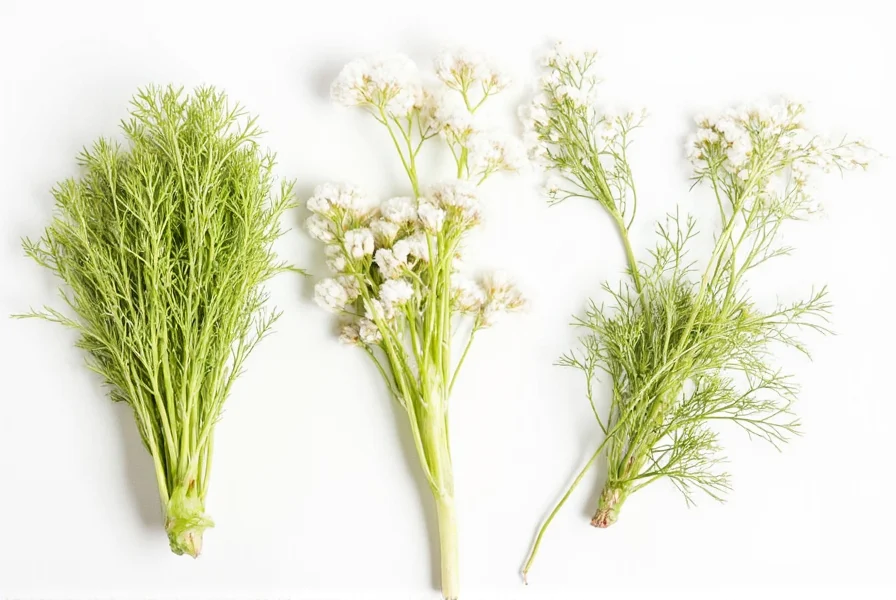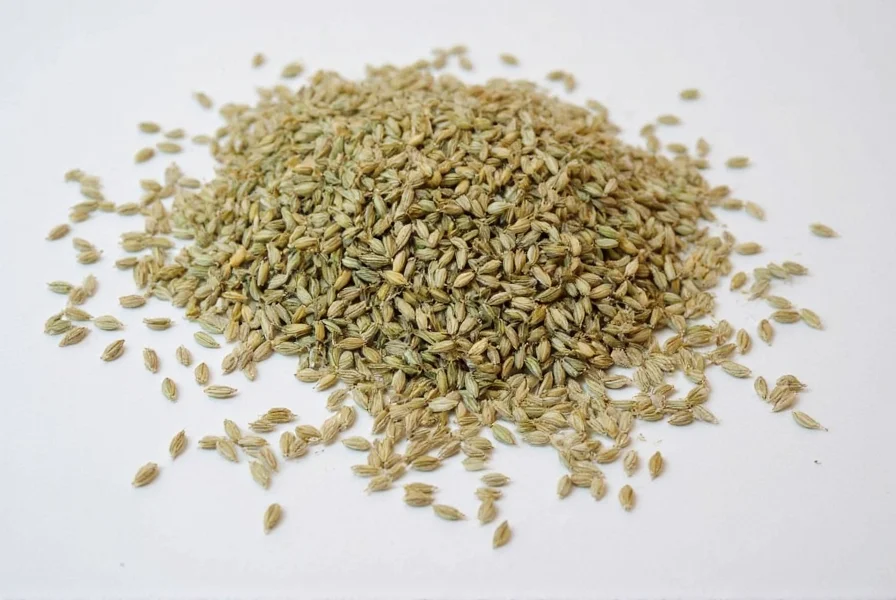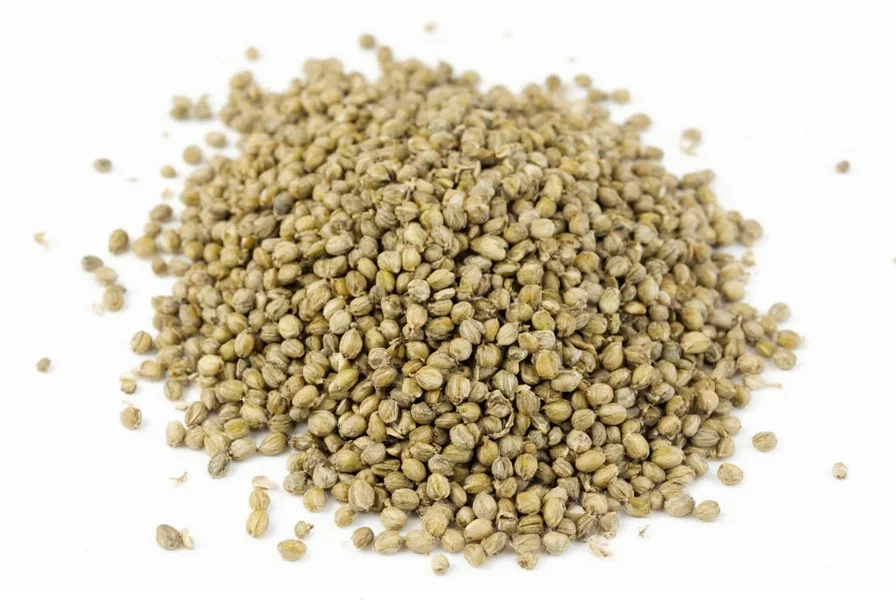Fennel seeds (Foeniculum vulgare) offer distinctive visual characteristics that make them identifiable once you know what to look for. These aromatic seeds serve as both a culinary spice and medicinal herb, making accurate identification valuable for cooks, gardeners, and herbal enthusiasts alike. Understanding what do fennel seeds look like close up helps prevent confusion with similar-looking seeds that have different flavors and properties.
Physical Characteristics of Fennel Seeds
Fresh fennel seeds typically display a vibrant greenish-brown hue that gradually matures to a warm yellowish-brown as they dry. Each seed measures between 4-8 millimeters in length and about 1-2 millimeters in width, giving them a slender, oval shape that tapers slightly at both ends. The most distinctive feature is the five prominent longitudinal ridges that run the entire length of each seed, creating subtle grooves between them.
When examining fennel seeds closely, you'll notice their smooth, slightly waxy texture. Unlike some seeds that appear dull or matte, quality fennel seeds have a subtle sheen that indicates freshness. The seeds grow in伞-shaped clusters called umbels, and when harvested, they remain connected at the base before being separated for culinary use.

Color Variations and Quality Indicators
The color of fennel seeds provides important clues about their freshness and quality. Understanding what color are fennel seeds at different stages helps determine their optimal usage period:
| Stage | Color | Texture | Best Use |
|---|---|---|---|
| Freshly harvested | Greenish-brown | Firm, slightly moist | Immediate culinary use |
| Properly dried | Yellowish-brown | Dry, brittle | Storage up to 2 years |
| Aged/stale | Dull brown | Hard, may crumble | Reduced flavor quality |
How to Identify Fennel Seeds: Visual Comparison
One of the most common challenges is distinguishing fennel seeds from similar spices. Learning how to identify fennel seeds visually prevents culinary mistakes, as substitution can dramatically alter dish flavors. The following comparison highlights key differences:
Fennel vs. Anise Seeds: While both have similar anise-like flavors, they differ visually. Anise seeds are smaller (3-5 mm), rounder, and darker brown with only two subtle ridges. Fennel seeds are larger, more oblong, and have five clearly defined ridges.
Fennel vs. Dill Seeds: Dill seeds appear similar but have a flatter profile, lighter tan color, and distinctive curved shape. They lack the prominent ridges of fennel seeds and have a more pungent, grassy aroma.
Fennel vs. Caraway Seeds: Caraway seeds share the ridged appearance but are darker brown, more curved (crescent-shaped), and have a sharper, earthier scent without the sweet anise notes.

Practical Identification Tips
When trying to determine fennel seeds appearance vs anise seeds or other similar spices, follow these practical identification methods:
- Measure them: Use a ruler or compare to a standard pencil lead (about 2mm) - fennel seeds should be noticeably longer
- Count the ridges: Genuine fennel seeds always have five distinct longitudinal ridges
- Perform the crush test: Rub a few seeds between your fingers - authentic fennel releases a sweet, licorice-like fragrance
- Check the color uniformity: High-quality fennel seeds maintain consistent coloring without dark spots
Understanding these visual characteristics becomes particularly important when purchasing seeds in bulk or from markets where labeling might be unclear. The fennel seeds size comparison chart above provides a quick reference for distinguishing them from commonly confused alternatives.
Why Visual Identification Matters
Accurate visual identification of fennel seeds serves several practical purposes. In culinary applications, mistaking fennel for similar seeds can dramatically alter a dish's flavor profile. While fennel offers a sweet, mild anise flavor, caraway delivers a sharper, more pungent taste that might overwhelm delicate recipes.
For gardeners, recognizing mature fennel seeds helps determine optimal harvest time. The seeds should be harvested when they turn from green to yellowish-brown but before they dry completely and scatter naturally. Proper identification also prevents accidental harvesting of toxic look-alikes like poison hemlock, which has significantly different seed characteristics.
When storing fennel seeds, their appearance provides quality indicators. Fresh seeds maintain their greenish tint and strong aroma, while older seeds gradually lose both. Learning to recognize these visual cues ensures you're using seeds at their flavor peak, enhancing everything from Italian sausages to Indian curries and Middle Eastern breads.
Common Misidentifications and How to Avoid Them
Misidentifying fennel seeds represents one of the most common spice confusion issues. The distinguishing fennel seeds from similar spices requires attention to specific details many overlook. Many commercial blends contain both fennel and anise, leading to further confusion about their individual appearances.
When examining seeds, focus on the ridge pattern - this remains the most reliable identifier. Fennel's five pronounced ridges create a distinctive star-like cross-section when cut vertically, unlike the smoother profiles of anise or the flattened shape of dill. The seeds' slight curvature (nearly straight but with a gentle arc) also differs from the pronounced crescent shape of caraway.
For those cultivating fennel, recognizing the seed clusters before separation helps confirm identification. Fennel seeds grow in distinctive umbrella-shaped clusters that remain connected at the base until harvested. This growth pattern differs from anise, which produces more compact seed heads.











 浙公网安备
33010002000092号
浙公网安备
33010002000092号 浙B2-20120091-4
浙B2-20120091-4